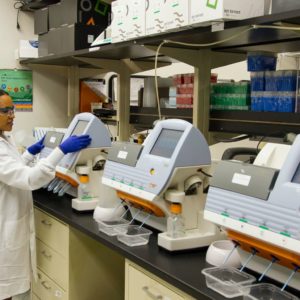Potentially the most prescient global conversation of the modern era has been that surrounding how we create, source, and consume energy. Buoyed by the stark realization of what fossil fuels are doing to our planet, we’ve seen more and more people calling for a rapid acceleration in our transition towards renewable energy. To put it bluntly, it’s the most serious crisis facing our civilization and if we don’t take big steps in the right direction, we’re going to find ourselves in a lot of trouble.
It’s through this lens that I look at Australia’s current energy production and I can’t believe what I see. The way things are currently being done needs a radical rethink – and I want to use this article to lay out why that’s the case.
Australia’s Current Status Quo
Australia considers itself a first-world country and so you might expect that we would be leading the way in terms of this important paradigm shift. Yet, that couldn’t be further from the truth.
As a country, we buy nearly all of our fuel energy from overseas[1] – producing very little here on our shores. We produce less than 1% of the total diesel consumed and make basically no sustainable aviation fuel. Instead, we choose to buy crude oil from overseas[2] on a “Just in Time” basis with local holdings sometimes as low as 5-7 days. We do have a strategic reserve, though it’s stowed overseas and in good times this can take 33-65 days to get here, as we’ve seen in recent months – supply chain delays can take this out to 5-7 months. The lag that we experience here means that we have to manage the shortfall as we wait for that fuel to arrive. In times of crisis, it’s nigh-impossible to secure shipping especially when a ship carrying fuel like this would likely be an enemy target.
This strategic reserve contains about 80-90 million barrels – with only a small portion actually available here in the country. This domestic storage equates to around 5-7 days of fuel reserves, with the rest being stashed away in a salt cave in the USA. Why it is stored there I have no idea – as that seems like a less than ideal place when we need to gain access to it.
The reason that the reserve exists is that it is a requirement of the International Energy Agency, a consortium of which Australia is a part. The idea is to provide some security in the event of shortages and other macro-economic factors that might place the energy grid under pressure. You might remember the drama with Adblue last year as a perfect illustration of why these reserves are important.
The crazier part of this is that the crude oil still needs to be refined before it can be used. As a country, we only have two operating refineries (Ampol and Viva Energy) and they have taken over $2bn worth of subsidies in the last year alone just to stay operational[3]. Additionally, a further $250m was deployed in April 2022 just to shore up domestic supply.[4]
This is an incredibly perilous position for a country like ours – especially in a period where oil prices are sky-high, war threatens global supply chains, and environmental concerns continue to mount. Just imagine the long-term costs associated with propping such a system up.
We have to find a better solution than just buying more oil. Surely?
Taking Responsibility For Our Actions
Beyond the economic and political risk that comes with continued fossil fuel risk, we should also consider what it says about us as a society if we continue to burn these resources with wanton abandon. The science is clear – we have to make more sustainable choices if we are slow and/or reverse global warming. As a developed country, we have a responsibility to manage our own carbon emissions and the range of additional environmental impacts that come along with it.
The government has so far paid mere lip service to these concerns, without the requisite actions to back it up. It doesn’t matter how many speeches you make, policies you write, task teams you join, or pilot projects you start – at the end of the day, you need to make difficult decisions that not only align with your stated values but push things in the direction of manifesting those ideas. It is the path of least resistance to buy oil from overseas because it’s well understood and doesn’t require much in terms of enablement.
But surely that can’t dominate the way that we think about this issue?
We must be better than that?
We have to take responsibility for our actions and take bold steps towards a future that is aligned with global sustainability principles. This means that we have to invest heavily in those areas that are most likely to bear fruit over the medium and long term. It’s time that we put our money where our mouth is and develop the sort of internal energy infrastructure that makes sense for a 2022 world and beyond.
Moving Towards Renewable Energy
Let’s go on a thought experiment for a moment. Imagine this. Australia takes those 80 million barrels of oil and sells it on the global marketplace, bringing in revenue of around $8-8.8bn[5] – including a hefty profit on some of those barrels that were originally purchased at $22 per barrel. With that money, we could actually march towards the future and invest in developing our own liquid fuels right here in Australia.
If were to convert biomass to energy, we could produce enough crops to sequester so much carbon that only 1% of Australia would need to become fully carbon neutral[6]. Everything above that would be a bonus, taking the country into the carbon-negative territory. In addition, we could take control of our energy and break the reliance we currently have on other countries around the world[7]. This would be a significant boon for Australia’s economy – bringing jobs and opportunities back to regional towns, giving farmers long-term cropping solutions, and stabilizing the price of the energy that our country relies on.
It’s a simple solution. Australian people produce domestic energy for consumption by Australians. Instead of having our energy reserves locked up elsewhere, we could store it right here in the country – giving us the flexibility and the agility to handle whatever the world throws at us.
We have the opportunity here to take things into our own hands and to break the cycle of learned helplessness that we seem to be perpetuating. It will take a paradigm shift and lots of hard work, but it’s undoubtedly the right way to go for a country that aspires to lead the way.
Oil is the past. Let’s sell it and invest those proceeds into a thoughtful and intentional strategic plan around renewable energy. We have an abundant bounty of renewable resources at our disposal and we need to start leveraging them. That’s how we look after our planet and that’s how we look after our people.
[1] ‘Australia Boosts Oil Reserves, but How Many Barrels Does $94 Million Get?’ by Michael Doyle. https://www.abc.net.au/news/2020-04-24/explainer3a-australia27s-oil-purchase/12177060
[2] ‘Australia Imports Almost All of Its Oil, and There Are Pitfalls All Over the Globe’ by Anthony Richardson. https://theconversation.com/australia-imports-almost-all-of-its-oil-and-there-are-pitfalls-all-over-the-globe-97070
[3] ‘Government Subsidy Deal to Keep Australia’s Last Oil Refineries Operating’ by Rick Wilkinson. https://www.ogj.com/refining-processing/refining/article/14203377/government-subsidy-deal-to-keep-australias-last-oil-refineries-operating
[4] ‘Government Announces $250 Million Grant for Australian Oil Refineries’ by Kathryn Fisk. https://www.whichcar.com.au/news/government-announces-250-million-grant-for-australian-oil-refineries
[5] Calculated at an oil price range of $100 – $110 per barrel.
[6] You can find out more about this potential at https://australiancarbon.com/
[7] ‘Foreign Oil Dependence a ‘Massive Vulnerability’ as Defence Experts Call for EVs, Green Transport’ by Daniel Mercer. https://www.abc.net.au/news/2022-03-21/calls-for-evs-to-wean-australia-off-foreign-oil-imports/100911930






